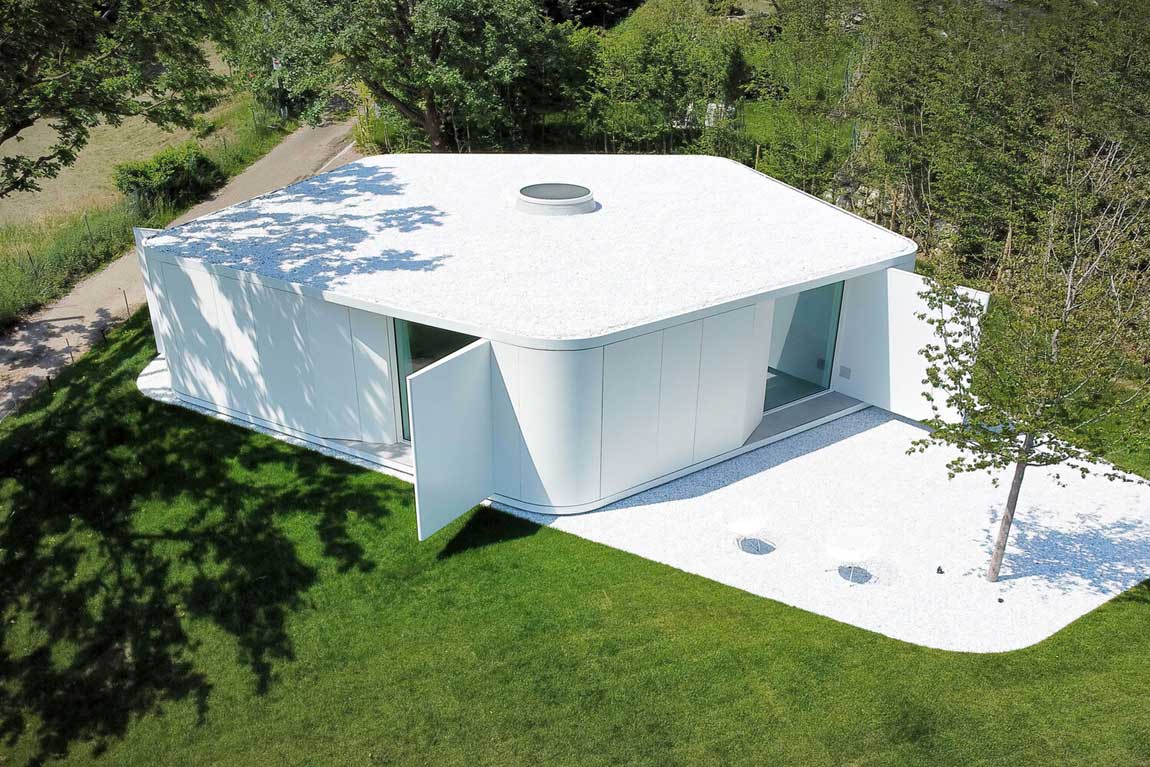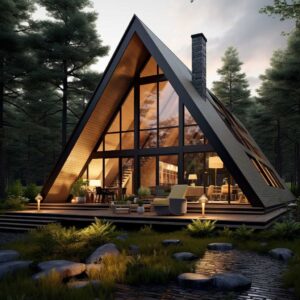A home isn’t just a shelter but a seamless blend of design, comfort, and adaptation. When it comes to modular homes, this harmony sings louder. Our quest for ideal modular homes invites us to consider an often overlooked yet crucial aspect – the climate. It weaves a tale of how we can select modular homes that not only defy geographical challenges but also revel in them.



Embracing the Warmth: Ideal Modular Homes for Hot Climates
Selecting ideal modular homes for hot climates goes beyond mere comfort—it’s about achieving a sense of serenity amid the swelter. Light colors are your allies here, reflecting the sun’s rays and helping to keep the interior cool.
Ventilation is a key aspect to consider. High ceilings, plentiful windows, and cleverly designed open floor plans can encourage airflow, creating a natural cooling effect. Meanwhile, appropriate insulation materials can shield your home from the heat, ensuring energy-efficient cooling.
Solar power harnesses the abundant sunlight typical in hot climates. Consider integrating solar panels into your modular home design, turning the relentless sun into your own personal power station.
Lastly, consider features such as extended eaves or shaded outdoor areas that can provide additional respite from the sun. This way, your modular home becomes an oasis in the heat, a cool retreat that embraces the sun’s energy while providing a comfortable living space.




Braving the Cold: Ideal Modular Homes for Cold Climates
When contemplating ideal modular homes for colder climates, the design should celebrate the cold while striving for warmth. Well-insulated walls, roofs, and floors are vital in preventing heat loss, maintaining a cozy ambiance inside.
Windows should be strategically located and double-paned, letting in natural light while minimizing heat escape. This creates a beautiful play of sunlight and shadows in your living space, keeping the chill out while inviting the beauty in.
Installing a high-efficiency heating system in your modular home is another key consideration. Incorporating radiant floor heating can add an extra touch of warmth and comfort during the coldest months.
Finally, embracing materials and colors that exude warmth can create an inviting atmosphere. From rich wood textures to deep color tones, these elements can transform your modular home into a cozy retreat amidst a wintry landscape.


Dancing with the Wind: Ideal Modular Homes for Windy Climates
Designing ideal modular homes for windy climates requires a harmonious dance with the elements. Think aerodynamic shapes and sturdy construction that can withstand strong winds, yet embody elegance and fluidity.
Consider wind-resistant materials such as steel or reinforced concrete for the structure of your modular home. These materials not only offer durability but also convey a sense of strength and perseverance.
Incorporate architectural features that diffuse wind pressure, like rounded corners and sloped roofs. Such features can turn potential challenges into strengths, allowing your modular home to gracefully stand against the winds.
Finally, strategically placed vegetation like windbreak trees can act as natural barriers, reducing wind speed and protecting your home. Thus, your modular home becomes a sanctuary, strong and steady amidst the wind’s dance.



The Breath of the Sea: Ideal Modular Homes for Coastal Climates
For coastal climates, ideal modular homes should echo the rhythm of the sea. This means using corrosion-resistant materials that can withstand salty air, and architectural elements that harmonize with the landscape.
Thoughtful design choices like open decks and large windows can capture stunning ocean views, while cleverly placed shutters can protect your home from strong sea winds or storms.
Incorporating elevated structures can safeguard your modular home from potential flooding, simultaneously providing unique architectural interest. Thus, your home becomes an expression of resilience, standing tall amidst the waves.
Lastly, remember that a coastal climate means more than just the sea—it’s about embracing the beach lifestyle. Outdoor showers, beach-friendly landscaping, and spacious outdoor living areas can transform your modular home into a coastal haven, attuned to the breath of the sea.



In the Heart of the Forest: Ideal Modular Homes for Woodland Climates
When creating your ideal modular homes in woodland climates, consider how you can build a symphony of man-made structure and nature. Choose natural, sustainable materials like wood or stone that reflect the woodland aesthetics, letting your home become an integral part of the forest.
Strategically placed windows and skylights can invite the dappled woodland light into your home, creating enchanting patterns of shadows and light. Meanwhile, they also offer stunning views of the surrounding trees, adding an air of tranquility to your home.
Consider integrating a robust fireplace in your modular home design. This will not only provide warmth during cooler forest nights but also enhance the coziness of your living space.
Lastly, create outdoor spaces that embrace the surrounding nature. A deck or a patio nestled among the trees can offer a peaceful retreat, letting you experience the forest’s heartbeat up close.


Under the Desert Sky: Ideal Modular Homes for Desert Climates
Ideal modular homes in desert climates should reflect the beauty of the vast, open landscape. Use light colors that reflect the sun’s rays, ensuring your home stays cool during the scorching day while capturing the unique palette of desert hues.
Design elements such as overhangs, pergolas, or courtyard designs can provide much-needed shade and create interesting play of light and shadow in your living spaces. These features not only offer comfort but also enhance the architectural interest of your modular home.
Water efficiency should be a top consideration in your modular home design. Incorporating water-saving appliances, rainwater harvesting systems, or xeriscaping in your landscape design can contribute to a sustainable desert living.
Lastly, consider the incorporation of outdoor spaces that let you marvel at the breathtaking desert sunsets or stargaze under the clear desert sky. A rooftop deck or a firepit area can provide unforgettable outdoor experiences, immersing you in the stark beauty of the desert.

Conclusion
The journey of selecting ideal modular homes for different climates is a voyage of understanding and creativity. It’s about recognizing the unique rhythm of each climate—be it the woodland’s whisper, the desert’s silence, the coastal breeze, or the gusts of wind—and allowing our homes to dance to it. When our homes become a symphony of human ingenuity and the elements, we not only create structures that endure but also ones that inspire. Let us continue to embrace the climate as a canvas, painting our ideal modular homes with strokes of adaptation, resilience, and harmony.












